Inbox and Environment News: Issue 287
October 30 - November 5, 2016: Issue 287
Environmental Articles this Issue:
Aquatics: Artists, Scientists And Children Celebrate Restoration Of Underwater Forests by UNSW - follow up on Palm Beach Seaweed Contributes to Reef Restoration - Bald Reef Gets New Growth With Seaweed Transplant by UNSW Ran in Issue 146 - January 2014
Glossy Black Cockatoos Return to Pittwater by Paul Wheeler
Moon Rock Declared An Aboriginal Place - wonderful images of by Neil Evers, Aboriginal Support Group Manly Warringah Pittwater + Garden Island dedicating a park to King Bungaree on November 26 + Friends of Narrabeen Lagoon Catchment Forum on November 28 on expansion of Narrabeen Lagoon catchment parklands and Narrabeen State Park
Avalon Garden Open Day
Hosted by Avalon Community GardenSunday, November 6 at 10 AM - 2 PMTasman Road entrance to Barrenjoey High School
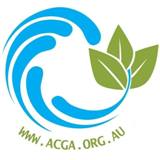 Please join us on Sunday 6th of November between 10am and 2pm to celebrate the Garden's 6th year and name change.
Please join us on Sunday 6th of November between 10am and 2pm to celebrate the Garden's 6th year and name change.
Wander through the garden and enjoy the line up of live music. Bring the kids for activities in their own garden area. Enjoy a light lunch, afternoon tea or a homemade lemonade from our cafe. Checkout the Boomerang Bag stall and, if you're lucky, win one of the great prizes being raffled. Our programme of demonstrations hold something for everyone:
- Smoking ceremony at 10am, followed by- Bee hive split by Selina Griffith - Making Kombucha with Jess Brandt and Brita Benjamin- Making Gingerbeer with Phyllis Agius- Cooking fresh and healthy food with My Kitchen's for Disco - Composting and worm farms with Yvonne Nicholls- Make your own sunscreen & mosquito repellent with Phyllis Agius
Hope to see you there!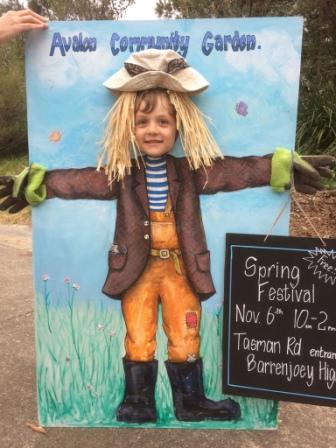
 Please join us on Sunday 6th of November between 10am and 2pm to celebrate the Garden's 6th year and name change.
Please join us on Sunday 6th of November between 10am and 2pm to celebrate the Garden's 6th year and name change.Big Win For Australia At The International Whaling Commission
Media release: 28 October 2016 - The Hon. Josh Frydenberg MPMinister for the Environment and EnergyAustralia has recorded a big win at the International Whaling Commission in Slovenia with the adoption of two Australian-led resolutions that will put greater pressure on Japan to end its so-called ‘scientific’ whaling and reform the Commission into a more effective organisation.
The first resolution ensures so-called ‘scientific’ whaling will be subjected to greater international scrutiny. Until now, the Commission had delegated the review of scientific whaling to its Scientific Committee, with little in-depth consideration by the Commission.
In introducing this resolution, I stressed that the Commission needed to engage more robustly in discussions on scientific whaling, form its own views and provide direction.
Importantly, the resolution also ensures the Commission takes account of the landmark ruling of the International Court of Justice in the Whaling in the Antarctic case.
The second resolution, called for an independent review of the Commission to improve its transparency and accountability, and bring it into line with best practice for multilateral treaty bodies.
Given the International Convention for the Regulation of Whaling is in its 70th year - it was important to ensure the Commission keeps pace with the times. This resolution was co-sponsored by Brazil, Mexico, New Zealand and the United States of America, and received unanimous support with Australia providing $200,000 to support the review.
These resolutions are a notable achievement for Australia and our co-sponsors. They help the Commission continue to evolve in response to changing times and pressures, and to take another step away from whaling towards global cetacean conservation.
This year, we celebrate the 30th anniversary of the global moratorium on commercial whaling. The moratorium must remain in place.
As a demonstration of Australia’s continuing leadership in cetacean conservation, I also announced that Australia has provided an additional $1.5 million to the Commission’s Southern Ocean Research Partnership. The Partnership has repeatedly demonstrated that whales do not need to be killed in order to study them.
The Government is committed to protecting whales and other cetaceans and resolutely opposed to all forms of commercial and so-called ‘scientific’ whaling. The message is clear, you don’t need to kill whales to study them.
Australia At The International Whaling Commission
Media release: 21 October 2016 - The Hon. Josh Frydenberg MP, Minister for the Environment and Energy
I will travel to Slovenia from 23 to 25 October for the biennial meeting of the International Whaling Commission to advocate for the global protection of whales and other cetaceans.
This year marks the 70th anniversary of the International Convention for the Regulation of Whaling and the 30th anniversary of the global moratorium on commercial whaling.
The Turnbull Coalition Government strongly supports the global moratorium and will continue to work towards a permanent end to all forms of commercial and so-called ‘scientific’ whaling.
I will deliver a statement on Australia’s behalf at this meeting, build support for two Australian-led resolutions, and hold bilateral talks with other nations to jointly champion the cause of cetacean conservation.
Australia will call on the Commission to take greater responsibility for how it deals with so-called ‘scientific’ whaling, including Japanese whaling in the Southern Ocean. For too long, the Commission has deferred responsibility for so-called ‘scientific’ whaling to its Scientific Committee. The Commission must be more engaged on this important and divisive issue and form its own conclusions.
As part of activities in Slovenia I will also host an event to celebrate the success of the International Whaling Commission’s Southern Ocean Research Partnership which has repeatedly demonstrated that whales do not need to be killed in order to study them.
At least 45 species of whales, dolphins and porpoises – including the humpback, minke, southern right, blue and sperm whale – are found in Australian waters. We take our obligations to protect these and all the world’s cetaceans seriously.
I look forward to working constructively with all members of the Commission at this year’s meeting.
Following the International Whaling Commission meeting, I will travel to Paris to meet with counterparts from UNESCO, the OECD and the French Government.
These meetings will provide a welcome opportunity to discuss implementation of the Paris climate change agreement and the Reef 2050 Plan. I will also have the opportunity to engage directly with French energy and technology firms investing in Australia.
Pittwater Natural Heritage Association Secures Grant To Further Works At Careel Creek
The Pittwater Natural Heritage Association (PNHA) shared some great news this week. They have secured a Grant to PNHA to control of vine weeds along Careel Creek, Avalon.
" We've received $23867,80 from Greater Sydney Local Land Services. The project is worth $52293.80 including contributions from Northern Beaches Council and other in-kind contributions including from volunteers."
Madeira Vine is one target of this great local organisation. It smothers trees and spreads from nobbly tubers along the stems.
If you'd like to help out the Careel Creek bushcare and regeneration happens on the 4th Saturday of each month, from 8:30 - 11:30am.
Keep up to date at on their Facebook page or at their website: pnha.org.au
Floating Landcare In The Pittwater/Hawkesbury Area
Volunteers needed:Where: Portugese Beach, Ku-ring-gai Chase National ParkWhen: Tuesday 8th November 2016Time: 8:15am start and return 2:00pmMeet at: Taylors Point Wharf, ClarevilleCost: FREE
RSVP: Essential by Friday 28th October! Please email your name and phone number to floatinglandcare@gmail.com or call Rebecca Mooy at Greater Sydney Local Land Services on 02 4724 2120. Confirmation details will be sent to all volunteers via email on 1.11.20168 volunteers so far, can take another 12.
Amazing progress on the Lantana on the steeper slopes at the southern end of the beach and a sweep through the dune for Aspargus Fern, Cotton Bush and litter. Looking for a few more volunteers to enjoy this trip and help with some follow up. This Beach could also be ideal for a swim in November.
Return transport on an oyster barge will be included as will morning tea, lunch, tools, gloves and bush regen knowledge from Judy Morris and Natasha Funke from NPWS.
To find out more about Floating Landcare:
Agreement To Protect Ross Sea Reached
Media Release: Government of New ZealandForeign Minister Murray McCully today hailed a breakthrough agreement that will create the world’s largest Marine Protected Area in the Ross Sea region of the Antarctic.
“At its annual meeting in Hobart this week, the Commission for the Conservation of Antarctic Marine Living Resources (CCAMLR) unanimously agreed to a New Zealand-United States proposal to establish a marine protected area in the Ross Sea,” Mr McCully says.
“New Zealand has played a leading role in reaching this agreement which makes a significant contribution to global marine protection.
“The new Marine Protected Area will cover roughly 1.55 million square kilometres, of which 1.12 million square kilometres will be a no fishing zone.
“The proposal required some changes in order to gain the unanimous support of all 25 CCAMLR members and the final agreement balances marine protection, sustainable fishing and science interests. The boundaries of the MPA, however, remain unchanged.
“Negotiations on the MPA started in 2012 and New Zealand would like to acknowledge all parties for coming together to reach an agreement that will safeguard one of the world’s few remaining pristine natural environments,” Mr McCully says.
The Marine Protected Area will enter into force on 1 December 2017.
For more details on the Marine Protected Area in the Ross Sea region of the Antarctic please visit the MFAT website.
The Marine Protected Area features:A ‘no take’ General Protection Zone (a fully protected area where no fishing is permitted) that includes:- the Ross Sea shelf and slope and the Balleny Islands - see (i) below
- Representative protection of areas that provide good samples of special habitats - this includes a seamount (underwater mountain) range - see (ii) below
- Scott Seamount - see (iii) below
- A Special Research Zone which allows for limited research fishing for krill and toothfish – see SRZ below
- A Krill Research Zone which allows for controlled research fishing for krill, in accordance with the objectives of the MPA – see KRZ below.
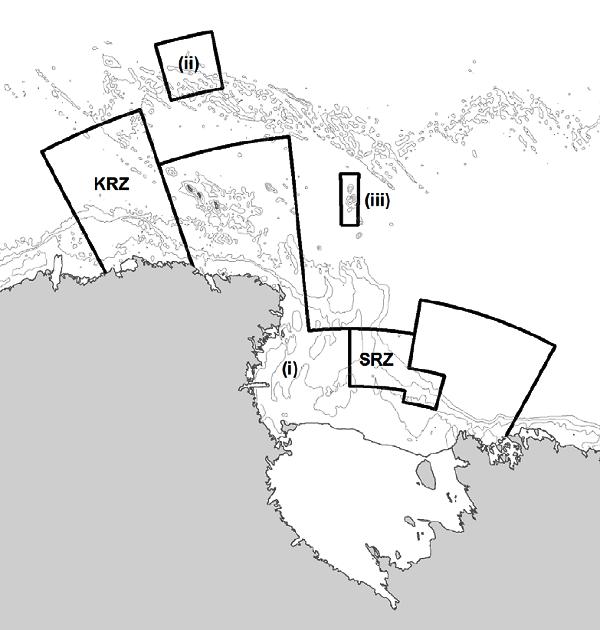
The duration of the MPA has been set at 35 years for the General Protection Zone, with a consensus decision by the CCAMLR membership required to continue the MPA beyond this period.
A lower period of duration was agreed for the management provisions in the Special Research Zone. These restrictions on fishing will expire after 30 years, at which time the Scientific Committee will consider whether other measures are required to meet agreed science and protection objectives.
The catch limit for Antarctic toothfish in the Special Research Zone is 15% of the total allowable catch for the Ross Sea fishery. The catch limit meets the scientific research and protection objectives for this area.
Should the Special Research Zone expire after 30 years, the catch limit will not exceed 20% of the total allowable catch set for this area.
- the Ross Sea shelf and slope and the Balleny Islands - see (i) below
- Representative protection of areas that provide good samples of special habitats - this includes a seamount (underwater mountain) range - see (ii) below
- Scott Seamount - see (iii) below
- A Special Research Zone which allows for limited research fishing for krill and toothfish – see SRZ below
- A Krill Research Zone which allows for controlled research fishing for krill, in accordance with the objectives of the MPA – see KRZ below.

A Plastic Ocean – Film Screening Avalon
 Thursday, November 17 at 7 PM - 10 PM
Thursday, November 17 at 7 PM - 10 PM
Avalon Bowlo1 Bowling Green Lane, Avalon.$15.00 Tickets at HERE
A Plastic Ocean is a new feature-length adventure documentary that brings to light the consequences of our global disposable lifestyle. We thought we could use plastic once and throw it away with negligible impact to humans and animals. That turns out to be untrue.
 Thursday, November 17 at 7 PM - 10 PM
Thursday, November 17 at 7 PM - 10 PMFive Resolutions Adopted On Day Four Of The IWC Plenary
October 27, 2016: International Whaling Commission (IWC)Day Four began with a discussion on special permit whaling, also known as scientific whaling. The different views within the IWC on this subject are well documented and complex discussions today included debate on whether lethal sampling is required to achieve the objectives of previous and current special permit whaling programmes.
Safety at sea was also discussed, and the Commission reiterated that international and domestic maritime law should be respected by all parties, and no activities should be undertaken that pose a risk to human life or the marine environment.
An update was given on the three existing Conservation Management Plans (CMPs): for western North Pacific gray whales, south western Atlantic and south eastern Pacific southern right whales. A new CMP was instigated for the franciscana dolphin of south eastern South America, and agreement reached to continue discussions on the Arabian Sea Humpback, as another potentially good candidate for a CMP.
Discussions concluded on five Resolutions which were opened earlier in the week. Consensus was achieved on a Resolution on Effectiveness of the IWC and a comprehensive, independent review will be conducted during the intersessional period.
Governments on all sides of the scientific whaling debate highlighted the positive and constructive spirit of negotiations on a Resolution on Improving the Review Process for Whaling under Special Permit, but ultimately agreement could not be reached and the Resolution was put to a vote which adopted the Resolution with 34 yes votes, 17 no votes and 10 abstentions. Amongst the measures included is the establishment of a new Commission Working Group to consider Scientific Committee reports and recommendations on this issue.
A Resolution on Food Security was deferred for further intersessional discussions, aiming to bring a new Resolution to the next meeting of the IWC in 2018.
A Resolution on Cetaceans and Ecosystem Services considered the contribution made by cetaceans to the marine ecosystem. This wasadopted by vote, with 36 governments voting yes, 16 voting no and 9 abstentions.
Also put to vote was a Resolution on the Minimata Convention on Mercury. This was adopted with 38 yes votes and 23 no votes.
Despite different views on the IWC's jurisdiction regarding small cetaceans (dolphins and porpoises) consensus was not blocked on a Resolution on the Critically Endangered Vaquita. The vaquita is a small porpoise that lives only in the Gulf of California. Now numbering less than 59 animals, the vaquita faces imminent extinction unless more is done to protect it from bycatch in illegal gillnets, and the Resolution calls on governments to act now.
Opposing views were expressed on the commercial whaling conducted by Iceland under an Objection to the Moratorium, and Norway under a Reservation to it.
As part of an agenda item on the Revised Management Programme, a report was provided on the Scientific Committee's Implementation Reviewprogramme: work to assess and update information on the structure and status of individual whale populations which is now focused on North Atlantic minke and North Pacific Bryde's whales. An Implementation Review on North Atlantic fin whales finished earlier this year.
Finally, the Commission commended a varied programme of work to extend collaboration with other organisations, acknowledging that this was the only way to tackle global problems like bycatch, marine debris and collisions between whales and ships.
Friends Of Narrabeen Lagoon Catchment Activities
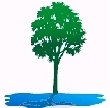 November 28, 2016 7pm: ForumThis is a most important forum where the Minister for Planning, Rob Stokes, MP, and the Administrator for Northern Beaches Council, Dick Persson, will each speak about Narrabeen Lagoon State Park and its future.
November 28, 2016 7pm: ForumThis is a most important forum where the Minister for Planning, Rob Stokes, MP, and the Administrator for Northern Beaches Council, Dick Persson, will each speak about Narrabeen Lagoon State Park and its future.
Please make the effort to be there - reply to this email: email@narrabeenlagoon.org.au giving the name/s of people wanting to attend and we will send you your ticket/s.
Enjoy the outdoors with one of these walksTerrey Hills to Deep Creek Sunday 4/12/20163 hr walk starting 8am at Terrey Hills cross the Deep Creekcatchment valley and feeder creek and end in Oxford Falls.See and identify spectacular Sydney sandstone flora. Bring ascrewdriver for 30 min weeding near the end of the walk.Allow 4 hrs. Carpool required. Phone Conny 0432 643 295
Oxford Falls Triangle 15/1/173 hour bushwalk starting 4.00pm from Morgan Rd, OxfordFalls. We identify plants in blossom and on the way home do20 min weeding of Whisky Grass. Please bring a screwdriveras a digging stick. Phone Conny 0432643295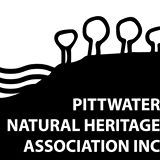
SUNDAY MORNING BIRDWATCHING with PNHA
Would you like to know more about our local birds and explore our bushland reserves? Then join us on one of our bird walks:
Our last walk of the year is at 7.30am on Sunday 27 November at Warriewood Wetlands. The summer migratory species will have arrived and the Wetlands will be home to nesting birds and birds with young. there should be plenty to see.Meet at Katoa Close, North Narrabeen.
Most walks last a couple of hours. Bring binoculars and morning tea for afterwards if you like. Contact pnhabirdwatching@gmail.com for details of each walk.
 November 28, 2016 7pm: Forum
November 28, 2016 7pm: Forum
SUNDAY MORNING BIRDWATCHING with PNHA
Would you like to know more about our local birds and explore our bushland reserves? Then join us on one of our bird walks:
Our last walk of the year is at 7.30am on Sunday 27 November at Warriewood Wetlands. The summer migratory species will have arrived and the Wetlands will be home to nesting birds and birds with young. there should be plenty to see.Meet at Katoa Close, North Narrabeen.
Most walks last a couple of hours. Bring binoculars and morning tea for afterwards if you like. Contact pnhabirdwatching@gmail.com for details of each walk.
Fuel To Be Made Out Of Waste At Eastern Creek Following Department Approval
October 27, 2016: Departmental Media Release - Department of Planning and EnvironmentThe Department of Planning and Environment has approved a modification request to allow fuel to be made out of waste at Eastern Creek Waste Management Centre, with strict conditions addressing issues raised during consultation.
“The recycling facility on the site currently takes away around 70 per cent of waste from the facility,” a spokesperson for the Department said.
By using waste to create a fuel product, this would mean that more than 90 per cent of waste is diverted away from landfill.
“This waste can then be transformed into a fuel and used as a substitute for fossil fuels.”
A spokesperson for the Department said consultation with the community is enshrined into the process for assessing applications.
“The modification request was made publicly available for community feedback towards the end of last year and was amended as a result of input from the local council,” a spokesperson said.
No public submissions were received.
Blacktown City Council made a submission on the original proposal regarding a new building being constructed to house the equipment.
Global Renewables amended their application by improving the design and processes, meaning that no new buildings were needed.
Key issues raised during submissions have been addressed by the Department during its assessment and strict conditions have been applied in response, including:- requiring all waste to be transferred by covered conveyor belts to reduce odour, stormwater and dust emissions
- noise and odour monitoring
- compliance with the Environment Protection Authority’s requirements in the NSW Energy from Waste Policy.
“The Department has thoroughly assessed the modification application under clear and consistent rules, which are the same for every applicant.”
For more information visit http://majorprojects.planning.nsw.gov.au/.
- requiring all waste to be transferred by covered conveyor belts to reduce odour, stormwater and dust emissions
- noise and odour monitoring
- compliance with the Environment Protection Authority’s requirements in the NSW Energy from Waste Policy.
Sydney Sea Eagle Fledgling Returned After Failed First Flight
Media release: 26 October 2016 - NPWSA young White bellied Sea Eagle fledgling has been returned to its nesting site in a delicate joint operation by the National Parks and Wildlife Service (NPWS), BirdLife Australia and Sydney Olympic Park Authority after falling around 20 metres from its nest last week.
NPWS Regional Manager Gary Dunnett said the young bird, whose parents have nested at Sydney Olympic Park, has been keenly watched via Birdlife Australia’s Eagle CAMs and volunteers for many weeks - but not without a fair bit of drama.
“This has not been a straight -forward operation but the news it has been located and successfully reunited with its parents will be widely celebrated by all involved, as well as the community and twitchers alike,” Mr Dunnett said.
“It’s been a long week since it first fell from the nest but this was an excellent joint operation that involved a number of key agencies and NPWS would like to thank everyone who has been behind the operation, including the community.
“This little fella didn’t stand much of a chance last week once he was on the ground due to potential predators, so this rescue mission has given him every opportunity to make it to full maturity from here.
“Sea Eagles are fantastic parents and their offspring require significant time with them to mature and become successful independent hunters.
“As a result, reuniting the fledgling with its parents was the best outcome we could hope for. Intervention is always a last resort.”
The fledgling was originally rescued last week after it became clear it was at risk on the ground. It was given a thorough health check by Taronga Zoo vets which confirmed it had no injuries from the fall and was in excellent health.
The next step was to return it to its parents without delay. However, the young bird was determined to test its flight skills again and soon found itself on the ground again, leaving authorities extremely concerned for its welfare. After days of monitoring it has been located, with its parents nearby, and now able to fly to low branches where it is considered safe from predators.
Judy Harrington, BirdLife volunteer and EagleCAM Team Leader, said the White-bellied Sea-Eagle is the second largest raptor (bird of prey) found in Australia and young Sea-Eagles are brown as juveniles than slowly become to resemble adults in a patchwork manner, acquiring the complete adult plumage by their fourth year.
“We are thrilled it has been successfully returned to the nest area but are watching closely as this is very risky time for an inexperienced fledgling to be out on his own,” Ms Harrington said.
“We are hoping the parents will continue to feed it and that it remains in a safe area until it has developed further life skills that allow it to survive independently.”
Mr Dunnett said it was now in the best place it can be – with its parents – and the rest was up to nature to see what happens over the next few weeks.
“It is not uncommon for fledglings to test their flight skills at this stage but if they land on the ground it takes a bit of effort to get back into a higher and safer location. We are delighted this fella has achieved this so far,” Mr Dunnett said.
“While this young bird is still a fledgling, it is no small baby, already weighing 2.7 kilos and almost a metre long.
“‘The Australian White Bellied Sea Eagle is without doubt one of the world’s most majestic raptors with a wing-span of up to 2 metres.
“Their success breeding in Sydney Olympic Park on Parramatta River is something all Sydney-siders should be proud of.
“The protection of their breeding site within Sydney Olympic Park and their constant monitoring by Birdlife Australia has not only delivered enormous pleasure to thousands of people around the world, but also shed light on their unique behaviours and ecology.”
Below: EagleCAM video dated October 17, 2016
Impact Of East Antarctic Glacial Melt On Sea-Level Rise
27th October 2016 - Media Release Department of the Environment and Energy: Australian Antarctic Division
The Australian Antarctic Program will study two glaciers, the Totten and Sørsdal, in East Antarctica this summer to better understand the impact ice melt is having on global sea-level rise.
The Totten Glacier, near Australia’s Casey research station, is the largest glacier in East Antarctica, and is showing signs that it is sensitive to warm ocean waters that can increase melt at the base of the ice shelf.
Australian Antarctic Division Glaciologist, Dr Ben Galton-Fenzi, said researchers want to better understand how much this glacial melt is driving sea-level rise.
“Since the 1900s the global sea-level has risen by around 20 centimetres and by the end of the century it’s projected to rise by up to one metre or more, but this is subject to high uncertainty,” Dr Galton Fenzi said.
“These estimates depend critically on understanding Antarctic glaciers, both how much and how fast they melt in a warming climate.
“We know there’s enough ice below sea level in the Totten Glacier, to raise global sea-levels by 3.5 metres, although this would likely take many centuries to occur,” he said.
This summer researchers will look at how warmer ocean water is melting glaciers and ice shelves from below.
“We will land helicopters on the Totten to deploy six GPS units to measure glacial flow speeds and surface elevation changes.
“We will also set up six Autonomous phase-sensitive Radio Echo Sounding (ApRES) instruments that can measure the glacier’s thickness up to 2km below the surface and with millimetre precision,” Dr Galton Fenzi said.
The instruments will be put out at the beginning of the summer and left on site for up to six weeks.
Other instruments will be left on the glacier over winter and collected next season, streaming a compressed form of base melt rate estimates via satellite over the winter.
At the Sørsdal Glacier, near Australia’s Davis research station, melt ponds form on the top of the glacier in the warmth of summer.
University of British Columbia Glaciologist, Dr Christian Schoof, said as the air temperature around Antarctica warms an increase in melt pond formation could have serious consequences.
“These ponds drain down through the ice until the water reaches bedrock, where it acts as a lubricant, causing the ice flow to speed up,” Dr Schoof said.
Dr Schoof and Australian colleagues’ work on Sørsdal Glacier will be the first attempt to monitor the effect of surface ponds on the flow of ice in East Antarctica.
“We will deploy cameras to take photos every 2-3 hours, put out pressure sensors to measure how the melt ponds fill and drain.
“We will also take temperature measurements on the surface of the glacier and use GPS antenna to determine if the ice flows faster in summer,” Dr Schoof said.
This year the Australian Antarctic Program will support 95 projects in Antarctica, the Southern Ocean and on sub-Antarctic Macquarie Island.
More than 500 expeditioners will travel south over the summer season on the Airbus A319 and C-17A Globemaster III, and on Australia’s icebreaker Aurora Australis, which departs Hobart today.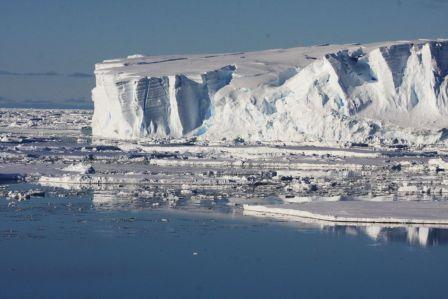
Scientists will study the Totten Glacier in East Antarctica to better understand the impact of ice melt on sea level rise. (Photo: Esmee van Wijk)

Land And Sea Transport Consultation
October 25, 2016: Dept. of Environment & Energy - Australian Government
Land and sea transport update - consultationThe updated Land and Sea Transport method is open for public consultation from Tuesday 25 October to Monday 21 November 2016.
The existing Land and Sea Transport method enables businesses to earn Australian Carbon Credit Units by reducing the emissions intensity of vehicles in the land and sea transport sectors, including by replacing vehicles, modifying vehicles (fuel switching), and changing operational practices.
The updated Land and Sea Transport method would replace the existing method and extend its scope to mode shift activities. Eligible mode shift activities involve transporting certain freight by rail instead of road. Rail transportation is generally less emissions intensive than road transportation per unit of freight transported.
The draft updated method also includes minor amendments which clarify eligibility requirements in the original Land and Sea Transport method and adds vehicle hours as a service unit for mobile equipment (such as mine haulage trucks).
Crown Land Management Bill 2016
An Act to make provision for the ownership, use and management of the Crown land of New South Wales; to repeal certain legislation consequentially; and for other purposes.
Initially introduced in the Legislative CouncilIntroduced by: Blair, NiallNotice of Motion: Tue 18 Oct 2016Introduced: Wed 19 Oct 2016First Reading: Wed 19 Oct 20162R Speech: Wed 19 Oct 2016In Legislative Council, 2R, Debate adjourned 5 calendar days, Wed 19 Oct 2016
Reforms to be introduced by proposed Act the principal reforms are as follows:(a) dedicated or reserved Crown land will no longer be vested in reserve trusts,(b) the Minister will, instead, be able to appoint Crown land managers for dedicated or reserved Crown land (including local councils),(c) the Minister will be able to create statutory land managers for appointment as Crown land managers (with board members of reserve trusts being automatically appointed by the proposed Act to statutory land managers for former reserve trust lands),(d) better governance structures and conduct requirements will be introduced for Crown land managers and their boards (where applicable),(e) the Minister will be able to issue Crown land management rules for the management of dedicated or reserved Crown land,(f) the Minister will be required to approve community engagement strategies for certain dealings or other action affecting Crown land (including altering or removing purposes for which Crown land is dedicated or reserved and preparing certain plans of management),(g) the terms and conditions of certain holdings will be permitted to deal with particular matters (such as the determination and redetermination of rent and the granting of subleases and sublicences) in a way that is different from default provisions for those matters set out inthe proposed Act,(h) the determination and redetermination of rent for holdings over Crown land will be rationalised and simplified (and applied to certain existing special tenures after a transitional period),(i) the holder of a holding or permit will be required to pay any rent or other amount due to the Crown before the holder can transfer it to another person,(j) a local council that is appointed as a Crown land manager of dedicated or reserved Crown land will be able to manage the land in accordance with the provisions of the Local Government Act 1993 applicable to community land (subject to certain exceptions and modifications),(k) the Minister will be able to transfer Crown land to local councils if the land is of local (and not State) significance,(l) special provisions will be introduced to protect native title rights and interests (including when Crown land is managed by or vested in local councils),(m) the current land assessment programme established by the Crown Lands Act 1989 will be discontinued,(n) more flexible arrangements will be introduced for the sale, use and leasing of Crown land in the Western Division (including enabling certain additional leaseholders to purchase the freehold in their leased lands),(o) modern and robust provisions will be introduced for investigating compliance with, and enforcing, the proposed Act and holdings granted under it (including provisions based, in part, on those of the Protection of the Environment Operations Act 1997),(p) the Minister will be required to approve 10-year State strategic plans for Crown land based on draft plans prepared and submitted for approval by the Secretary of the Department of Industry, Skills and Regional Development (the Secretary).
Repeal of existing Crown land legislation and related legislationThe proposed Act will repeal the Crown Lands Act 1989, the Crown Lands (Continued Tenures) Act 1989, the Western Lands Act 1901 and certain other legislation.
Strong Community Response To Landcare Programme Survey
Joint media release: 25 October 2016 - The Hon. Josh Frydenberg MP, Minister for the Environment and Energy
The Hon. Luke Hartsuyker MP, Assistant Minister to the Deputy Prime MinisterLandcare volunteers, organisations and supporters from across Australia have added their voice to the review of the Australian Government’s National Landcare Programme.
Minister for the Environment, Josh Frydenberg and Assistant Minister to the Deputy Prime Minister, Luke Hartsuyker thank all those who took the time to complete the survey. The community’s feedback is an important part of the review and will help measure how well the programme has performed, and how well it has engaged with the community, industry, the environment and agricultural sectors.
“Australians take a keen interest in the environment and that’s reflected in the level of engagement in the stakeholder survey,” Minister Frydenberg said. “Each piece of feedback will be considered as part of the review, ensuring Australians have their voice heard in shaping the future of Landcare.”
Over 900 responses were received from across the nation between 15 September and 14 October, with nearly a third of responses coming from local groups working to improve natural resource management in their local area.
Minister Hartsuyker said the National Landcare Programme has helped land managers to deliver more sustainable agriculture while protecting Australia's natural environment.
“The level of interest in this survey demonstrates that you share this government’s recognition of the importance of sustainable and effective land management and how it continues to underpin our valuable and world-class agriculture industries,” Minister Hartsuyker said.
Findings from the review are expected to be presented next year and will help guide decisions about future investment in natural resource management.
The Coalition is investing $1 billion over four years to support better natural resource management across Australia through the National Landcare Programme.
More information on the programme is available at www.nrm.gov.au/national-landcare-programme.
Kangaroo Valley Public School Helping Save Local Threatened Species
Media release: 26 October 2016 - NPWSStudents from Kangaroo Valley Public School have been learning how to protect local threatened species as part of a unique National Parks and Wildlife Service (NPWS) program that uses puppet shows and rap songs.
The recent workshop covered the Spotted-tailed Quoll, Glossy Black-Cockatoo, Broad-headed Snake, Long-nosed Potoroo, and the iconic Brush-tailed Rock-wallaby.
NPWS Technical Officer Juliet Dingle said older students presented their diverse and creative plans on how to help these species to the school, after taking part in the workshop where they also learnt about the Shoalhaven Rock-wallaby recovery program.
“The children and teachers learnt all about local wildlife and the importance of a healthy ecosystem for oxygen, clean water, food, medicine, shelter, fibres and stable climate,” said Ms Dingle.
“We talked about making educated decisions as consumers and about how to be responsible pet owners. Children who own cats were inspired to go home and create enclosed playgrounds for their feline friends, knowing that is one of the simplest ways they can save hundreds of native animals every year.
“The students were also given the opportunity to take home motion-detecting fauna monitoring cameras to see what other species live near them.
“Most kids know it’s bad for the environment to litter, but I love seeing the look in their eyes when they find out how many other ways they can help look after the amazing variety of local wildlife,” Ms Dingle said.
The curriculum-based biodiversity workshop, including the Shoalhaven Rock-wallaby recovery program, has been delivered to over 1,000 students across 20 schools by Ms Dingle on behalf of the Friends of the Brush-tailed Rock-wallaby and with assistance from the NSW Environment Trust.
Kangaroo Valley Public School Principal Andrew Smee said NPWS conservation work with the local population of threatened Rock-wallabies has provided the students with an understanding that they can all make a difference and be champions for their local and greater environments.
NPWS has also partnered with the multi-award winning local conservation group, Friends of the Brush-tailed Rock-wallaby and the community for over twenty years to rescue the iconic Rock-wallaby, which resides locally as NSW’s most southerly remnant population.
The Shoalhaven Rock-wallaby recovery work is part of the NSW Government’s Saving our Species (SoS) program which aims to protect almost a thousand animals and plants, at risk of extinction, for the next 100 years. The SoS program recently received a funding boost of $100 million to help preserve NSW’s most endangered species.
To learn more about the Brush-tailed Rock-wallaby visit: www.environment.nsw.gov.au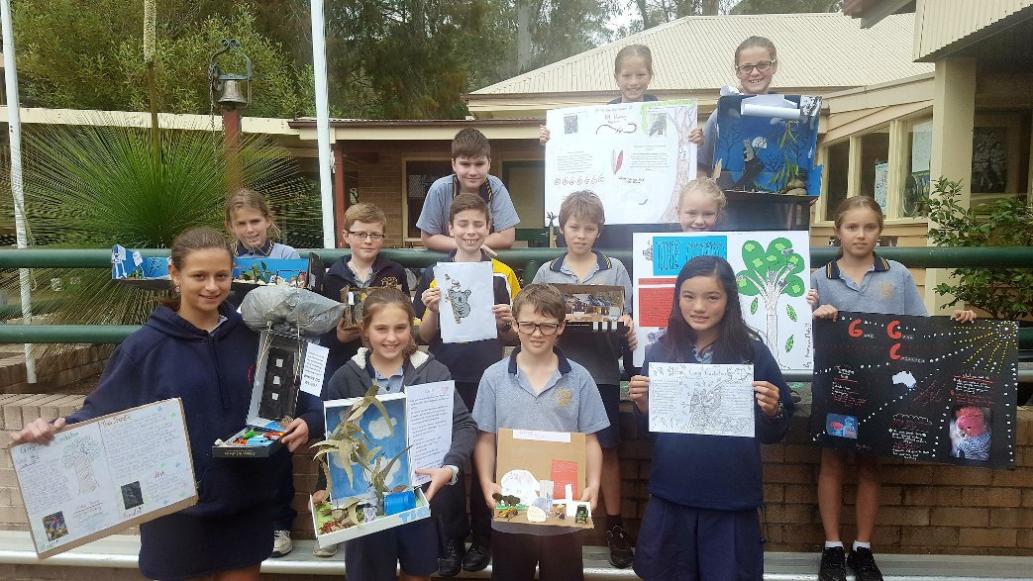 Year 6 Students Kangaroo Valley Public School Students from Kangaroo Valley Public School have been learning how to protect local threatened species as part of a unique National Parks and Wildlife Service (NPWS) program that uses puppet shows and rap songs to create awareness of biodiversity. The recent half day workshop covered the Spotted-tailed Quoll, Glossy Black-Cockatoo, Broad-headed Snake, Long-nosed Potoroo, and the iconic Brush-tailed Rock-wallaby. Photo courtesy of and copyright Office of Environment and Heritage.
Year 6 Students Kangaroo Valley Public School Students from Kangaroo Valley Public School have been learning how to protect local threatened species as part of a unique National Parks and Wildlife Service (NPWS) program that uses puppet shows and rap songs to create awareness of biodiversity. The recent half day workshop covered the Spotted-tailed Quoll, Glossy Black-Cockatoo, Broad-headed Snake, Long-nosed Potoroo, and the iconic Brush-tailed Rock-wallaby. Photo courtesy of and copyright Office of Environment and Heritage.

Thousands Of Waterbirds Return To Macquarie Marshes
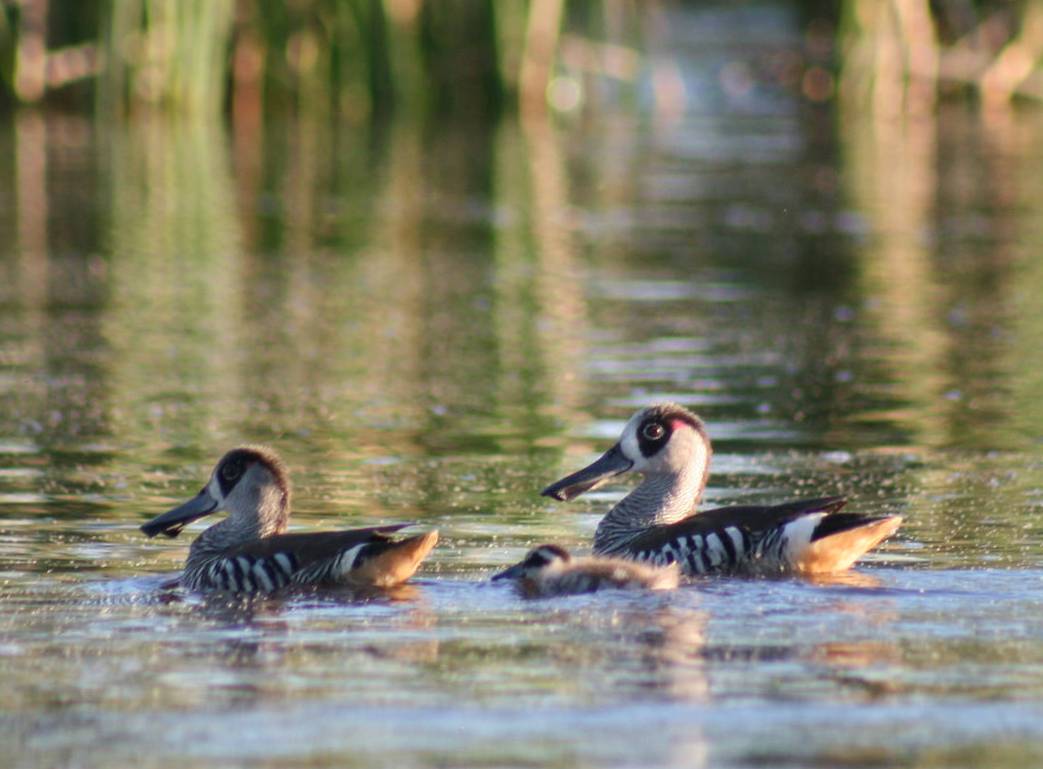 Pink eared Ducks and their young - Photo courtesy of and copyright Office of Environment and Heritage.
Pink eared Ducks and their young - Photo courtesy of and copyright Office of Environment and Heritage.

Thousands Of Waterbirds Return To Macquarie Marshes
Media release: 24 October 2016 - NSW Office of Environment and HeritageBirdlife is booming at the Macquarie Marshes northwest of Dubbo as waterbirds flock to the area following recent rains.
Office of Environment and Heritage (OEH) Senior Wetlands and Rivers Conservation Officer Tim Hosking said the soaking rains over winter had ‘primed’ the system well and with high inflows from the Macquarie River in recent weeks there is now a major bird breeding event in the Marshes.
“The Marshes were inundated by early Spring rainfall across the catchment and a number of waterbird colonies have started up, primarily Straw-necked Ibis which have built an estimated 30,000 nests across a few sites,” Mr Hosking said.
“The skies are also filled with ducks, cormorants, magpie geese, egrets and herons. Recent monitoring indicates there are thousands of nests and newly hatched broods throughout the thriving wetland areas.
“We’ve not seen birdlife at the Marshes quite like this since 2012, so it is fantastic to see the birds return in such good numbers.
“Adding to the cacophony are native frogs such as the Barking Marsh Frog and wetland vegetation is flourishing, creating a sea all shades of green.
“The Marshes response to the water this year is that much better thanks to the Macquarie-Castlereagh Environmental Flows Reference Group’s careful planning and involvement throughout the preceding three-year dry spell,” Mr Hosking said.
Using environmental water allocations carried over from 2012, the advisory group targeted strategic areas within the Marshes that would prime the overall system making it ready to bounce back when more water became available.
“The Advisory Group is a community-government partnership and has a long history helping to shape decisions around environmental water,” Mr Hosking added.
“We often have to make hard choices as the seasons tighten, but informed by rapidly evolving scientific information, together we do the best we can.
“OEH and Commonwealth Environmental Water Office will be looking at the water flows in the Marshes over the next few months in case we need to intervene to extend the duration of inundation at key waterbird breeding and foraging sites.
Commonwealth Environmental Water Holder David Papps said current conditions provided an opportunity to provide natural flow variation in response to rainfall events.
“By working together we can create the right conditions to improve the health of native plants, fish, waterbirds and other wildlife and restore the river, floodplains and wetlands of the Macquarie catchment,” Mr Papps said.
For more info about the Macquarie Marshes, visit the OEH website.
Macquarie Marshes Nature ReserveMacquarie Marshes Nature Reserve was created in January 1971. It covers an area of 21,927ha. Macquarie Marshes Nature Reserve is in central northern New South Wales, around 100 km north of Warren and 30 km west of Quambone. It was listed as a Ramsar Wetlands site in 1986.
Find out more about visiting Macquarie Marshes Nature Reserve webpage on the National Parks and Wildlife website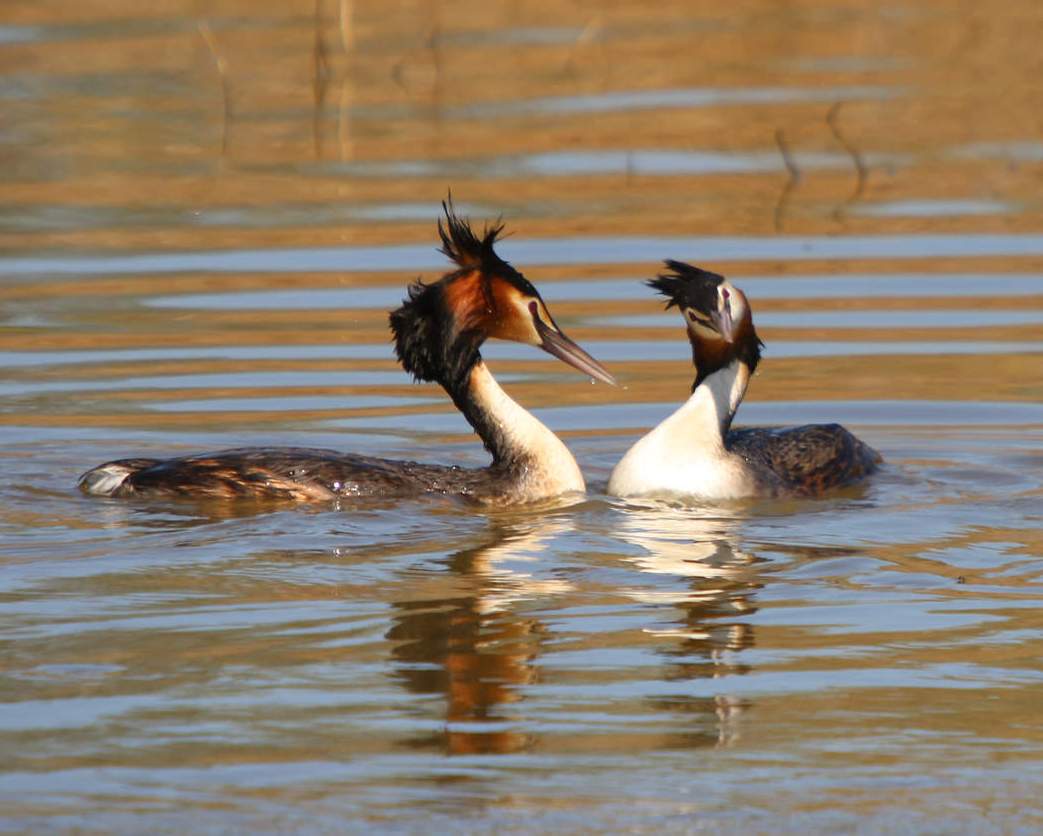 Great Crested Grebes - Photo courtesy of and copyright Office of Environment and Heritage.
Great Crested Grebes - Photo courtesy of and copyright Office of Environment and Heritage.

Researchers Heading South For Antarctic Summer
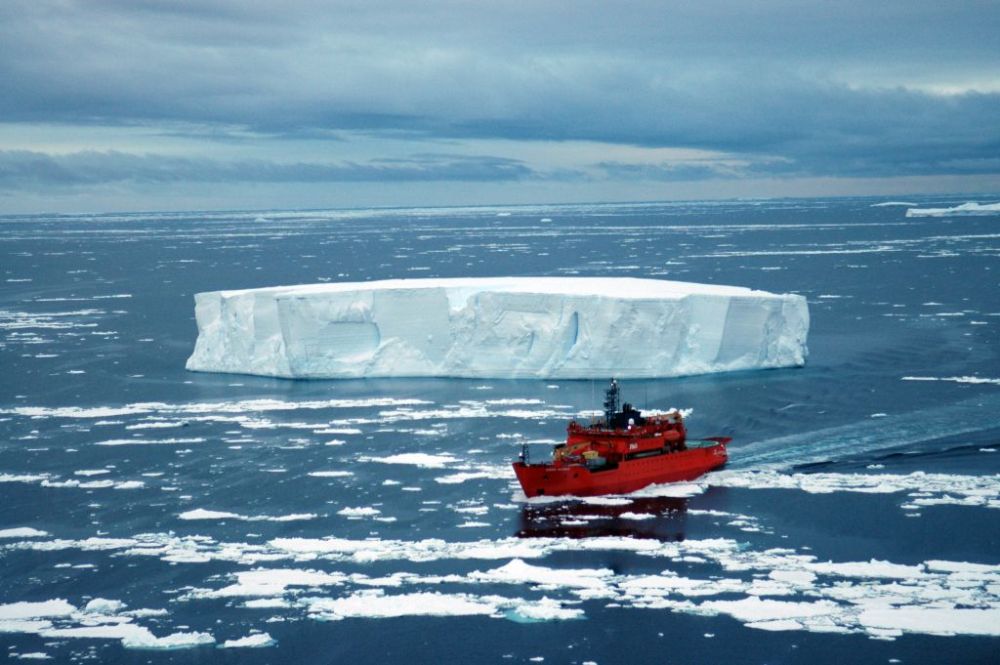
The Aurora Australis departs Hobart for Davis research station today. (Photo: Frederique Olivier)
Thursday, 27th October 2016 - Media Release Department of the Environment and Energy: Australian Antarctic Division
The Australian Antarctic Program will study two glaciers, the Totten and Sørsdal, in East Antarctica this summer to better understand the impact ice melt is having on global sea-level rise.
The Totten Glacier, near Australia’s Casey research station, is the largest glacier in East Antarctica, and is showing signs that it is sensitive to warm ocean waters that can increase melt at the base of the ice shelf.
Australian Antarctic Division Glaciologist, Dr Ben Galton-Fenzi, said researchers want to better understand how much this glacial melt is driving sea-level rise.
“Since the 1900s the global sea-level has risen by around 20 centimetres and by the end of the century it’s projected to rise by up to one metre or more, but this is subject to high uncertainty,” Dr Galton Fenzi said.
“These estimates depend critically on understanding Antarctic glaciers, both how much and how fast they melt in a warming climate.
“We know there’s enough ice below sea level in the Totten Glacier, to raise global sea-levels by 3.5 metres, although this would likely take many centuries to occur,” he said.
This summer researchers will look at how warmer ocean water is melting glaciers and ice shelves from below.
“We will land helicopters on the Totten to deploy six GPS units to measure glacial flow speeds and surface elevation changes.
“We will also set up six Autonomous phase-sensitive Radio Echo Sounding (ApRES) instruments that can measure the glacier’s thickness up to 2km below the surface and with millimetre precision,” Dr Galton Fenzi said.
The instruments will be put out at the beginning of the summer and left on site for up to six weeks.
Other instruments will be left on the glacier over winter and collected next season, streaming a compressed form of base melt rate estimates via satellite over the winter.
At the Sørsdal Glacier, near Australia’s Davis research station, melt ponds form on the top of the glacier in the warmth of summer.
University of British Columbia Glaciologist, Dr Christian Schoof, said as the air temperature around Antarctica warms an increase in melt pond formation could have serious consequences.
“These ponds drain down through the ice until the water reaches bedrock, where it acts as a lubricant, causing the ice flow to speed up,” Dr Schoof said.
Dr Schoof and Australian colleagues’ work on Sørsdal Glacier will be the first attempt to monitor the effect of surface ponds on the flow of ice in East Antarctica.
“We will deploy cameras to take photos every 2-3 hours, put out pressure sensors to measure how the melt ponds fill and drain.
“We will also take temperature measurements on the surface of the glacier and use GPS antenna to determine if the ice flows faster in summer,” Dr Schoof said.
This year the Australian Antarctic Program will support 95 projects in Antarctica, the Southern Ocean and on sub-Antarctic Macquarie Island.
More than 500 expeditioners will travel south over the summer season on the Airbus A319 and C-17A Globemaster III, and on Australia’s icebreaker Aurora Australis, which departs Hobart today.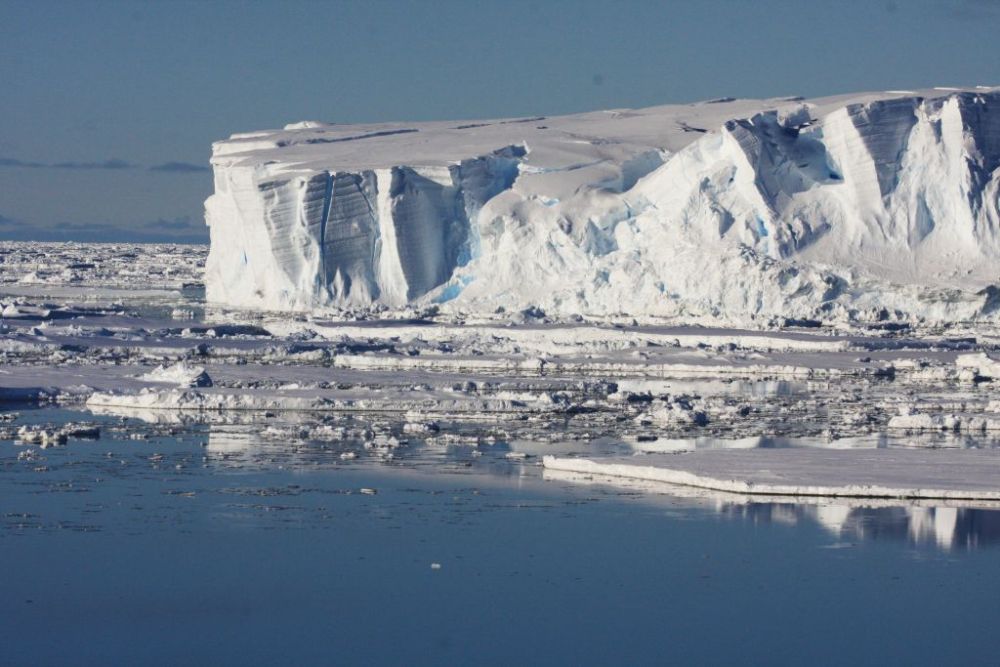
Scientists will study the Totten Glacier in East Antarctica to better understand the impact of ice melt on sea level rise. (Photo: Esmee van Wijk)


Minister Joyce Appoints ‘The Carpinator’
26 October 2016: Media Release - The Hon. Barnaby Joyce, Deputy Prime Minister, National Party Leader and Minister for Agriculture and Water ResourcesThe war to rid our waterways of one of Australia's most devastating pests, the common carp, has received a boost today with the appointment of a national coordinator to develop the Coalition Government's $15 million National Carp Control Plan.
In making today's announcement, Deputy Prime Minister and Minister for Agriculture and Water Resources, Barnaby Joyce, said the extensively qualified Mr Matt Barwick, dubbed 'the Carpinator', will head up the plan's development, in conjunction with the Fisheries Research Development Corporation (FRDC), to be finalised by the end of 2018.
"Trained in environmental science with years of experience and extensive networks in fisheries research and management in both the government and non-government sectors, Matt is perfectly placed to take on the role as 'Carpinator' to coordinate and develop this important program," Minister Joyce said.
"Matt will work with a range of state and federal government departments, as well as non-government stakeholders including researchers, industry and environmental organisations, recreational fishers, Indigenous and community groups, tourism operators and landholders to develop the plan.
"CSIRO, NSW Department of Primary Industries and the Invasive Animals CRC have put in years of work to assess this biological control measure, the carp herpes virus, to put a stop to the pest.
"Carp can cause damage of up to $500 million per year by lowering water quality of domestic and irrigation water supplies, damaging wetlands, impacting upon agriculture, commercial and recreational fisheries, regional tourism industries, and harming native fish populations and river health.
"The Coalition Government's National Carp Control Plan is a visionary initiative. The next step is to carefully look at what we know and evaluate whether the biological control of carp through use of the carp herpes virus will deliver the expected benefits.
"In particular we are assessing whether the virus will effectively deliver a significant reduction in carp impacts to achieve our goal of a 95% reduction in carp by 2045 at an acceptable cost.
"I look forward to working closely with Matt and the FRDC as they embark on this once-in-a-lifetime opportunity to manage one of the country's worst pests that costs our national economy up to $500 million per year, for the good of our precious waterways and natural resources."
Fast facts- Carp are present in all states and territories except the Northern Territory and are estimated to comprise 80-90 per cent of the total fish biomass in the Murray Darling Basin (Environmental Protection Authority 2015).
- The annual cost of carp in Australia is estimated at up to $500 million per year (report to the Murray Darling Basin Authority, 2010).
- The government is investing $15 million over 2.5 years in the National Carp Control Plan.
- The $15 million National Carp Control Plan is funded by the Department of Agriculture and Water Resources, the Department of Environment and Energy and the Department of Industry, Innovation and Science.
- The earliest possible release date for carp herpesvirus, pending approvals, is late 2018.
- The total biomass of carp in our waterways is estimated between 500,000 and 2 million tonnes.
- Carp are present in all states and territories except the Northern Territory and are estimated to comprise 80-90 per cent of the total fish biomass in the Murray Darling Basin (Environmental Protection Authority 2015).
- The annual cost of carp in Australia is estimated at up to $500 million per year (report to the Murray Darling Basin Authority, 2010).
- The government is investing $15 million over 2.5 years in the National Carp Control Plan.
- The $15 million National Carp Control Plan is funded by the Department of Agriculture and Water Resources, the Department of Environment and Energy and the Department of Industry, Innovation and Science.
- The earliest possible release date for carp herpesvirus, pending approvals, is late 2018.
- The total biomass of carp in our waterways is estimated between 500,000 and 2 million tonnes.
Best And Brightest Shine At Green Globe Awards
Thursday, 27 October 2016: Media Release - Hon. Mark Speakman, NSW Minister for the Envirnment & HeritageThe state’s biggest movers and shakers in environmental excellence, leadership and innovation were recognised last night at the 2016 Green Globe Awards at the Art Gallery of NSW.
NSW Environment Minister Mark Speakman said the awards recognised the 15 winners’ extraordinary talent and passion for the environment.
“This year’s prestigious Premier’s Award went to the Bower Reuse and Repair Centre, a non-profit reuse and repair centre which has collaborated with local councils to provide a rehoming service for furniture and other goods,” Mr Speakman said.
“In 2015/16 this service diverted 139 tonnes of material from entering landfill.”
Mr Speakman said the Get Grubby Project by Mememe Productions , creators of dirtgirlworld, won the 2016 Resource Efficiency Award.“This interactive website targets our pre-schools and empowers children to do little things that have a big impact,” he said.
“Through the powerful tool of storytelling children learn how to maintain worm farms, grow their own vegetables and be energy and water wise.”Charles Sturt University and Jaliigirr Biodiversity Alliance were joint winners of this year’s Regional Sustainability Award.
“Charles Sturt University is the first university in Australia to achieve carbon neutral status – a 32 per cent reduction in emissions from 2011 to 2015. Jaliigirr Biodiversity Alliance is a network of organisations working to establish wildlife corridors in the Bellinger River catchment,” Mr Speakman said.
An independent panel of environmental experts helped select this year’s winners. The awards have been running for 17 years. For a full list of winners and entry forms for next year, visit www.environment.nsw.gov.au/greenglobes
Watch Out For Baby Whales
Saturday 22 October 2016: Hon. Mark Speakman, Minister for the Environment
With a record number of whales migrating along the NSW coast this year,Environment Minister Mark Speakman is urging whale watchers to keep a safe distance, particularly from mothers with calves.
“The ‘humpback highway’ is playing host to thousands of whales and calves migrating south which has been a delight for spectators right along the coast,” Mr Speakman said.
“But while it is tempting to motor, swim or paddle close to these incredible animals it is important that people behave in a safe manner and give them space.”
Mr Speakman said vessels including kayaks, surf skis and surfboards were required to remain 100m from a whale, or 300m if a calf was present.Unmanned aerial drones were required to stay more than 300m away from marine mammals.
“These regulations are in place to protect both the wellbeing of the animals and the safety of whale watchers,” he said.
“There are plenty of safe ways to view the whale migration. NSW’s headlands have some of the best land-based whale watching spots in the world.”
Top NSW whale watching sites include:- Cape Byron Lighthouse
- Tomaree Head Summit, Tomaree National Park
- Cape Solander, Kamay Botany Bay National Park
- Jervis Bay National Park
- Ben Boyd National Park near Eden
For up to date whale sightings near you, download the free Wild About Whales app or visit wildaboutwhales.com.au
Whale Watching Season runs May-November.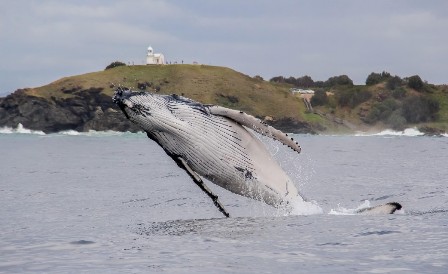
- Cape Byron Lighthouse
- Tomaree Head Summit, Tomaree National Park
- Cape Solander, Kamay Botany Bay National Park
- Jervis Bay National Park
- Ben Boyd National Park near Eden

Patrols Stepped Up As Illegal Entry Causes Damage To Livingstone National Park
Media release: 24 October 2016 - NPWSThe National Parks and Wildlife Service (NPWS) is stepping up patrols of Livingstone National Park, near Wagga Wagga after illegal entry saw severe damage caused to trails, requiring extensive repairs.
NPWS Regional Manager Mick Pettitt said trails throughout the Park were inspected after early spring rain and the park was closed to all vehicles from 4 September.
“We took the decision to close the park for the safety of visitors and to prevent further damage to the tracks and trails,” Mr Pettitt said.
“Despite clear signage marking closed trails, we have evidence that several vehicles entered restricted areas and caused even more damage.
“This behaviour is potentially dangerous to those in the vehicle as getting bogged or stranded is a real possibility.
“The damage these vehicles have caused also means that NPWS is faced with costly repairs and will need to close the trails for a longer period while these repairs are undertaken.
“The northern end of Livingstone National Park, has been particularly impacted by drenching rains with above average rain causing extreme surface and groundwater volumes.
“The Link and Range Trails have now been completed eroded and washed away.
“Even when these important fire trails dry out they will be impassable, compromising potential access into these areas of the park,” Mr Pettitt said.
NPWS will be stepping up patrols to prevent people from entering the area as it dries out and causing further damage.
NPWS’ investigation into incidents of illegal park entry is continuing.
Up to date information on closures in NSW National Parks can be found at the NPWS website.
Drone Survey Of Cliff Failure At North Head
19 October 2016: Water Research Laboratory (WRL)While Sydney’s coastline is a spectacular natural asset that we can all enjoy, a catastrophic failure of the cliff line at North Head recently demonstrated that it can also be unpredictably dangerous.
WRL’s CASA certified UAS pilot, Chris Drummond, recently assisted JK Geotechnics with a drone inspection of North Head following a large collapse of the cliff in August. The innovative use of drones on the project provided a safe and a cost effective method of surveying the entire cliff area as well as identifying areas requiring closer inspection via rope access.
A 3D point cloud of the cliff area developed using the drone provided the engineering geologists with an interactive method of assessing unstable features in the cliff faces including blocks, wedges and undercuts to assist in their assessment of cliff face stability.
Draft National Strategy For Mitigating Vessel Strike Of Marine Mega-Fauna
October 27, 2016: Dept. of Environment & Energy - Australian Government
Public consultation — submissions close 5.00pm AEST Friday 9 December 2016
The Australian Government Department of the Environment and Energy is releasing the draft ‘National Strategy for Mitigating Vessel Strike of Marine Mega-fauna’ for public comment.
How to make a submissionIf you would like to provide comment or input in response to the draft national stategy:
1. Complete a submission cover sheetYou must provide a completed cover sheet with your comments:Submission cover sheet (DOCX - 77.49 KB)
2. Send your submissionComments can be provided in email, word document or PDF Format. Please include the Reference ‘Draft National Strategy for Mitigating Vessel Strike of Marine Mega-fauna’ as a subject heading. You can submit your comments by:
Email to:migratoryspecies@environment.gov.au (preferred option) or
Mail to:Migratory Species SectionWildlife, Heritage and Marine DivisionGPO Box 787Canberra ACT 2601
Please note submissions are due by 5.00pm AEST on Friday 9 December 2016
Official Launch Of The First Trial Installation Of Oyster Bags At Sugarloaf Point
28 October 2016: Water Research Laboratory (WRL) - UNSWOver the past 18 months, engineers at WRL led by A/Professor Will Glamore and Dr Stefan Felder have worked with OceanWatch Australia to research the behaviour of oyster shell filled bags exposed to attack from wind waves and boat waves.
This novel coastal erosion solution involves the use of seeded oyster shells in coir (coconut fibre) bags. As well as reducing foreshore erosion, these units are intended to create fish habitat by promoting the restoration of living oyster reefs. Initial physical modelling tests in the 3 m wave flume were published by the WRL Projects Team in January 2016.
On Wednesday of this week, Senior Coastal Engineer Ian Coghlan participated in the official launch of the first trial installation of oyster bags at Sugarloaf Point in Sydney’s Lane Cove National Park. Stay in touch for the imminent release of follow-up oyster bag research by an undergraduate student supervised by Dr Felder.
Photo: 3 m wave flume testing of oyster shell filled bags
Tasmanian Government Sets New Greenwash Record As More Forests Doomed
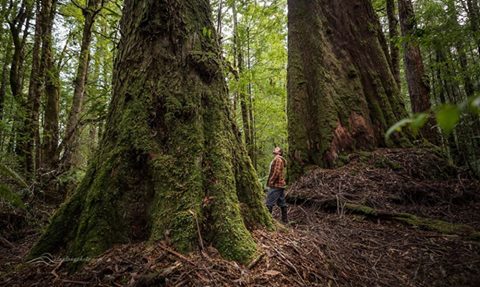
October 26, 2016: Media Release - The Bob Brown FoundationThe Tasmanian government has today set a new greenwash record by announcing plans to fast-track legislation to log high conservation value forests that missed out on secure conservation in the failed ‘forest agreement process’, to log inside reserves set aside for endangered species, to log stream-side reserves, and to continue taxpayer prop-ups for an industry which has already sucked more than $1 billion out of the public purse, and yet change the name of Forestry Tasmania to Sustainable Timber Tasmania.
“Premier Hodgman has today adopted the old dictum, ‘if you are going to tell a lie, tell a whoppa!’” Bob Brown said, after Tasmania’s government announced it would change Forestry Tasmania’s name to Sustainable Timber Tasmania. ‘Premier Hodgman will clearfell and incinerate high-conservation value forests like Wielangta, Bruny Island and the Tarkine and call it 'sustainable'!'
‘Clearfelling and steep-slope logging continues in Tasmania today at a multi-million-dollar loss to the taxpayer and is pushing unique species to extinction. Rainforests in Tasmania’s Tarkine and the habitat of endangered species like Tasmania's giant Wedge-tailed eagles, Freshwater Crayfish, Swift Parrots and Masked Owl are already being logged. Now Hodgman has plans to increase logging zones and fast-track access to allow logging in high conservation value forests that have been protected under a moratorium since 2011,’ Jenny Weber said.
“Adding insult to today’s injury to the forests, the Government will allow rainforest logging in areas previously set aside, suggesting that logging in ‘informal reserves’ is on the drawing board,” Jenny Weber said.
“Tasmania’s public will pay dearly in both dollars and jobs for Forestry Tasmania’s intensive logging, clear-felling and smashing roads into vast swathes of forest. Hodgman has committed to making the public pay for some of the 14 000 km of roads that were ploughed into ancient forests by Forestry Tasmania in the past decades while citizens protested because intact forests were being lost and taxpayers funds were being squandered,” Jenny Weber said.
Photograph: Threatened Ancient Forests in Tasmania's Tarkine by Al Long

Applications Open For Illegal Dumping Clean-Up And Prevention Grants
Media release: EPAThe NSW Environment Protection Authority (EPA) has today opened Round Four of the Illegal Dumping Clean-up and Prevention grants to applications from councils, public land managers and community groups across NSW to share in $500,000 in grants.
Under the NSW EPA’s Waste Less Recycle More initiative funding is made available for projects to clean-up and prevent illegal dumping of a wide range of waste, including asbestos and other building materials, as well as household junk commonly found dumped, like broken furniture, old mattresses and white goods.
The grants will also help to establish illegal dumping baseline data, which can be used to identify dumping trends and target hot spot problem areas like vacant residential lots and bush areas.
EPA Executive Director Waste and Resource Recovery Steve Beaman said the grants played an important role in enabling local communities to tackle illegal dumping.
“Illegal dumping is a serious problem in our state – it not only harms the environment, it can put human health at risk,” Mr Beaman said.
“The clean-up of illegal dumped waste is an expensive and time-consuming process. These grants can help councils and public land managers not only tackle existing problem areas, but also enable them to put in place preventative programs.”
In the three previous rounds of the program, a total of $4.36 million has been awarded to fund 71 projects.
To date, these projects have resulted in:- Over 5,000 tonnes of waste cleaned up, including over 200 tonnes of asbestos;
- 136 hotspots protected from further dumping;
- A range of preventative measures installed to deter dumping including 49 gates, 2554 meters of fencing, 23 earth mounds, 164 signs, 148 barriers and bollards, 862 tonnes of rock barrier and 111 surveillance devices;
- Increased regulatory action against illegal dumpers including 117 penalty notices, 44 clean-up notices, $100,848 in fines and $59,000 in court penalties.
In Round Four, a total of $500,000 will be awarded under three streams:- Illegal dumping clean-up and prevention projects: $50,000 - $150,000 for councils and public land managers to carry out such programs
- Establish illegal dumping baseline data: up to $20,000 for councils and public land managers
- Illegal dumping clean-up and prevention community partnerships: up to $50,000
Expressions of interest are open until 4pm, 8 November 2016.
More information about the Illegal Dumping Clean-up and Prevention grants is available at www.epa.nsw.gov.au/wastegrants/combat-illegal-dump.htm
- Over 5,000 tonnes of waste cleaned up, including over 200 tonnes of asbestos;
- 136 hotspots protected from further dumping;
- A range of preventative measures installed to deter dumping including 49 gates, 2554 meters of fencing, 23 earth mounds, 164 signs, 148 barriers and bollards, 862 tonnes of rock barrier and 111 surveillance devices;
- Increased regulatory action against illegal dumpers including 117 penalty notices, 44 clean-up notices, $100,848 in fines and $59,000 in court penalties.
- Illegal dumping clean-up and prevention projects: $50,000 - $150,000 for councils and public land managers to carry out such programs
- Establish illegal dumping baseline data: up to $20,000 for councils and public land managers
- Illegal dumping clean-up and prevention community partnerships: up to $50,000
Improvements To Planning Assessment
16.10.2016: Ministerial Media Release - The Hon. Rob Stokes MP, Minister for PlanningThe NSW Government will promote earlier and better engagement with the community in the assessment of large scale or complex projects, often classified as state significant development or state significant infrastructure. Environmental Impact Assessment is typically used in the assessments of mining developments, renewable energy projects, chemical and manufacturing industries, port facilities, electricity generating works, waste management facilities and major public transport projects. Planning Minister Rob Stokes today released a discussion paper with ideas on how to improve planning assessments, focused on building confidence in the assessment process. “Public confidence in the project assessment process is particularly important for state significant projects, where the impacts can be large and experienced over many years,” Mr Stokes said. “We need to ensure the community is involved in the assessment at the earliest practicable stage to improve the quality of engagement between all participants. “Better engagement results in better planning outcomes and builds confidence and trust in the assessment process.” Suggested changes put forward for discussion include:• Driving earlier and better engagement with affected communities• Improving the quality and consistency of EIA documents• Developing a standard approach for applying conditions to projects• Providing greater certainty and efficiency around decision-making, including assessment timeframes• Strengthening monitoring and reporting on project compliance• Improving accountability of EIA professionals.
To provide feedback and please visitwww.planning.nsw.gov.au/improvingeia
NSW EPA Proposes Minimum Recycling Standards For Construction And Demolition Waste
Media release: 21 October 2016The NSW Environment Protection Authority (EPA) has today released for public consultation draft amendments to improve the quality and quantity of reusable construction and demolition waste material in NSW.
The proposed reforms introduce new targets for the sorting, recycling and disposal of construction and demolition (C&D) waste at waste facilities that receive more than 6,000 tonnes per year and that deal with majority of C&D waste in NSW.
Construction and demolition waste includes excavated material such as rock and soil, waste asphalt, concrete, plasterboard, and timber.
Proposals also include enhanced requirements around asbestos transport and disposal to reduce potential harm, improved practices at landfills including addressing waste exhumation, and clarifications around the administration and application of the waste levy.
NSW EPA Executive Director of Waste and Resource Recovery Steve Beaman said the proposed changes will help to protect the NSW environment and human heath, and to achieve the state’s recycling target of 80 per cent for C&D waste by 2021.
“By improving the quality of recycled construction and demolition product before it leaves the waste facility we can reduce the potential for load contamination and increase the amount of material that can be recycled back into productive re-use opportunities,” Mr Beaman said.
“We are also helping to protect the health of our environment by ensuring that contaminated waste is identified, separated and appropriately disposed of before it leaves the recycling yard and is not mixed in with recycled waste purposed for reuse in our communities.
“To help set the bar for improved recycling, the reforms also include minimum annual resource recovery targets of 75 per cent for a facility that receives more than 30,000 tonnes of C&D waste per year, and 50 per cent for facilities that receive between 6,000 and 30,000 tonnes per year.
“These facilities are processing the majority of construction and demolition waste in NSW.
“In a modern waste environment such as ours these standards are both expected and achievable.
“This public consultation period is an important time for the waste industry, stakeholders and interested members of the public to have their say on the proposed changes and I encourage them to provide their comments.”
The proposed changes are outlined in the paper New minimum standards for managing construction and demolition waste in NSW, available on the EPA website. Consultation will be open for public comment from 21 October until 17 November. The EPA will also be holding industry forums in the coming weeks.
More information, including the Consultation Paper, how to comment and details of the forums can be found on the EPA website here:www.epa.nsw.gov.au/wasteregulation/managing-construction-demolition-waste-minimum-standards.htm
Public Consultation On The Revised Contaminated Land Management – Guidelines For The NSW Site Auditor Scheme
What's this about?
The Contaminated Land Management – Guidelines for the NSW Site Auditor Scheme describe the obligations of site auditors in conducting a site audit, and the administrative framework supporting the scheme. The guidelines apply to individuals accredited as site auditors in NSW and those seeking accreditation.
The guidelines have been revised to account for the amendment of the National Environment Protection (Assessment of Site Contamination) Measure 1999, and to bring improvements to the NSW Site Auditor Scheme.
When finalised, these guidelines will be ‘made’ under s. 105 of the Contaminated Land Management Act 1997. Before the guidelines are finalised, the EPA is interested in receiving comment on this draft.
Have your sayThe draft guidelines can be viewed on the EPA website, butcomments should be made by:
email at: nswauditors@epa.nsw.gov.aupost at –Director Contaminated Land ManagementEnvironment Protection AuthorityPO Box A290Sydney South NSW 1232
Online ConsultationDate: Oct. 12 - Nov. 9, 2016Time: 10:00am — 5:00pm
Indirect Effects Of Rising Carbon Dioxide Levels On Ecosystems More Important Than Previously Thought
October 26, 2016The indirect effects of rising atmospheric carbon dioxide (CO2) levels, such as changes in soil moisture and plant structure, can have a bigger impact on ecosystems than previously thought.
Understanding the importance of these indirect effects, in comparison to the direct effects, will improve our understanding of how ecosystems respond to climate change.
A study, involving researchers from the University of Southampton, found that water-limited ecosystems in arid and semi-arid regions, such as The Great Plains and South-West United States and some in Australia and Mediterranean Europe, were particularly impacted by these indirect effects. For those ecosystems, the importance of the indirect effects was as much as or in some cases, greater than, the direct effects.
Co-author Dr Athanasios Paschalis, a New Frontiers Fellow in the Water and Environmental Engineering group at the University of Southampton, said: "These results have major implications for our understanding of the CO2 response of ecosystems, the future of water resources and for global projections of CO2 fertilisation. This is because, although direct effects are typically understood and easily reproducible in models, simulations of indirect effects are far more challenging and difficult to quantify."
Rising CO2 levels affect a lot of plants directly by stimulating photosynthesis and reducing the loss of water (plant transpiration) by reducing the opening of the small pores in the leaves, known as 'stomata'. This triggers several more subtle, indirect effects. For example, when plants close their stomata, they use less soil water, changing the amount of soil water available to other plants. At the same time, altered water availability and enhanced photosynthesis can change the amount of leaf, root and below ground microbial biomass, resulting in changes to ecosystem functioning.
In the study, published in the Proceedings of the National Academy of Sciences (PNAS), the researchers found that these indirect effects explain, on average, 28 per cent of the total plant productivity response, and are almost equal to the size of direct effects on evapotranspiration (ET) -- the sum of evaporation and plant transpiration from the land to the atmosphere..
Using computer simulation, the researchers investigated the effects of elevated CO2 across a variety of ecosystems. They were able to specifically determine for which ecosystems and climatic conditions the indirect effects of elevated CO2 are of crucial importance.
The simulations suggested that the indirect effects of increased CO2 on net primary productivity (how much carbon dioxide vegetation takes in during photosynthesis minus how much carbon dioxide the plants release during respiration) are large and variable, ranging from less than 10 per cent to more than 100 per cent of the size of direct effects. For ET, indirect effects were, on average, 65 per cent of the size of direct effects. Indirect effects tended to be considerably larger in water-limited ecosystems.
Dr Paschalis added: "Understanding the responses of plants to elevated concentrations of CO2 is of major importance with potential implications on the global economy and water and food security under a changing climate."
The study was led by Dr Simone Fatichi (ETH Zurich -Switzerland), and involved researchers from Aukland University of Technology (NZ), the University of Southampton (UK), Duke University (US), Villanova University (US) and the University of Tasmania (AUS).
Simone Fatichi, Sebastian Leuzinger, Athanasios Paschalis, J. Adam Langley, Alicia Donnellan Barraclough, Mark J. Hovenden. Partitioning direct and indirect effects reveals the response of water-limited ecosystems to elevated CO 2. Proceedings of the National Academy of Sciences, 2016; 201605036 DOI: 10.1073/pnas.1605036113
Come To The Harvest Festival On Liverpool Plains
Join the people of the Liverpool Plains and their supporters for a fun family-friendly weekend, bringing people together from far and wide to protect our food bowl and cultural heritage from Shenhua’s mega coal mine. Harvest Festival against Shenhua, Friday 6th Nov – Sunday 8th Nov, at Breeza on the Liverpool Plains. There will be live music, tours, kids activities, food, plus workshops on local farming, Gomeroi culture and heritage, the risks posed by the Shenhua mine, the skills to defend the Liverpool Plains against the mine… and more! IMPORTANT: REGISTRATION!To ensure you have the most up to date information about Harvest Festival, and to help organisers with numbers, it is important register to attend. Registering is quick and easy, simply click the "register here" link and fill out the form. WHEN AND WHEREHarvest Festival against Shenhua is taking place at “West Garawan” (next to the proposed Shenhua mine site) at Breeza on the Liverpool Plains. The program kicks off at 7pm Friday 6 November, and runs through to 4pm Sunday 8 November. Gates open 12pm Friday for camping set-up. WHAT TO BRINGToilets and adequate showers will be provided, otherwise come self-sufficient to camp on a hot open plain (eg. bring your tent, sleeping bag, torch, water bottle, and personal items). There are a range of alternative accommodation options in the nearby towns and villages of Quirindi, Gunnedah, Werris Creek or Spring Ridge. All of these options are roughly 20-30 minute drive from the event site. Food will be available on-site either to purchase or via suggested donation to cover costs. PROGRAMA full program detailing speakers, workshops, and other activities will be posted here once it is available.Each day there will be workshops, talks, tours, and fun for the kids throughout. It will be an inspiring and memorable weekend of good times, learning, and the chance to meet new people. On Friday and Saturday evenings there will be quality country music and the option to relax over dinner and a drink on your picnic rug. The workshop program will:- Offer education by locals and key experts in: local farming practices, water impacts and other threats of the mine, and local ecology – including koalas.
- Provide Gomeroi culture and heritage education by Gomeroi traditional owners.
- Sightseeing and photography tours of the beautiful and iconic Liverpool Plains.
- Focus on building capacity, preparedness and next steps to take action against Shenhua.
- Provide skills sharing in peaceful direct action.
DISTANCE TO HARVEST FESTIVAL:From Sydney: 4 ½ hours, via Pacific Motorway and New England HwyFrom Newcastle: 3 hours 15 minutes, via New England HwyFrom Tamworth: 50 minutes, via Werris Crk RdFrom Armidale: 2 hours, 10 minutes, via New England HwyFrom Lismore: 6 hours, via New England HwyFrom Brisbane: 7 1/2 hours, via New England HwyFrom Melbourne: 12 hours, via Newell HwyFrom Canberra: 7 hours, via Pacific Motorway and New England Hwy There is also a daily train service available from Sydney to Gunnedah.
- Offer education by locals and key experts in: local farming practices, water impacts and other threats of the mine, and local ecology – including koalas.
- Provide Gomeroi culture and heritage education by Gomeroi traditional owners.
- Sightseeing and photography tours of the beautiful and iconic Liverpool Plains.
- Focus on building capacity, preparedness and next steps to take action against Shenhua.
- Provide skills sharing in peaceful direct action.
Have Your Say On The Springvale Mine Water Treatment Project
26.09.2016: Departmental Media Release - Department of Planning and EnvironmentA proposal by Springvale Coal Pty Limited for a water treatment project will be on exhibition from today for community consultation.
The Department of Planning and Environment is keen to hear the community’s views on the proposal, which seeks to:
• construct a pipeline to transfer mine water to Mount Piper Power Station• treat this water at a new desalination plant at the power station• use treated water in the power station’s cooling water system• discharge any excess treated water through the Springvale Coal Services site• place remaining by-products from the treatment process at the Springvale Coal Services site. The Planning Assessment Commission granted Springvale coal mine a 13-year extension of its operations last September. As part of its approval, the Commission required the mine to reduce the salinity of its discharges into the water catchment over the long term.
This proposal would allow the mine to achieve these water quality improvements while also supplying the power station with most of the water it needs to operate.
A spokesperson for the Department of Planning and Environment said the local community always has an opportunity to share their views.
“Community consultation is an integral part of the planning process and the applicant will have to respond to the feedback we receive,” the spokesperson said.
“This feedback is taken into consideration as part of the assessment.
“It’s easy to participate by going online and we encourage everyone to take a look and have their say.”
To make a submission or view the Environmental Impact Statement (EIS), visit www.majorprojects.planning.nsw.gov.au.
Submissions can be made from Tuesday 27 September until Tuesday 8 November 2016.
Written submissions can also be made to:
Department of Planning and EnvironmentAttn: Director – Resource AssessmentsGPO Box 39Sydney NSW 2001
The application and EIS are also available to view in person at:• Department of Planning and Environment: Information Centre, Level 22, 320 Pitt Street, Sydney• Lithgow City Council: 180 Mort Street, Lithgow• Nature Conservation Council: Level 14, 338 Pitt Street, Sydney.________________________
Have Your Say Invincible Coal Mine - Southern Extension Modification
Exhibition Start 27/09/2016Exhibition End 08/11/2016
Documents at: majorprojects.planning.nsw.gov.au/job_id=7961
"Castlereagh Coal are seeking approval for the extension of mining to occur over a period of up to 8 years to provide for flexibility in the supply of nut coal through: • providing an option for Manildra to source all required nut coal directly from Invincible • continuing to source nut coal from a range of other existing sources supplemented by supply from Invincible where necessary or cost effective to do so • utilising a blended product using coal from the other seams within the Southern Extension Area where this can be used at the Shoalhaven Starches Plant.
The mining of coal in the target Lithgow Seam will necessarily involve the extraction of coal from the Lidsdale and Irondale Seams which are located above the Lithgow Seam. In total, there is an estimated 2.7 Million tonnes (Mt) of run-of-mine (ROM) coal in all seams down to, and including, the Lithgow Seam.
Investigations are currently being undertaken to assess whether coal from the Lidsdale or Irondale Seams can be used at the Shoalhaven Starches Plant when washed and blended with coal from the Lithgow Seam. Surplus coal from the Lidsdale and Irondale Seams which is unable to be used in the Shoalhaven Starches Plant will be sold to Mt Piper Power Station for energy production consistent with the previous mining operations at Invincible."
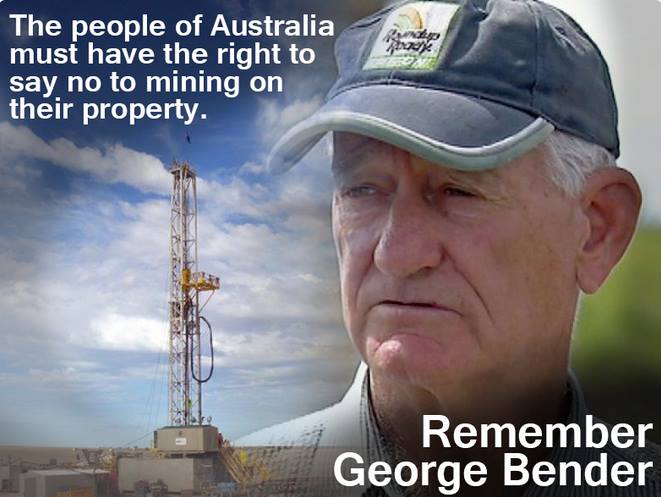

Have Your Say On The Extension Of Martins Creek Quarry
13.10.2016: Departmental Media Release-Department of Planning and EnvironmentA proposal by Buttai Gravel Pty Ltd to extend the Martins Creek Quarry near Maitland will be on exhibition from today for community consultation.
The Department of Planning and Environment is keen to hear the community’s views on the proposal, which seeks to:- clear 37.8 hectares of vegetation to expand the existing extraction area
- rehabilitate the quarry site progressively, and after extraction is completed
- extract up to 1.5 million tonnes of hard rock material per year
- increase the hours of operation
- transport processed material to market by road trucks and trains
- construct a new access driveway and bridge.
The project at Station Street in Martins Creek would create approximately 36 jobs when the quarry is fully operational (an increase from the current 24) and provide a substantial number of additional short-term construction jobs.
A spokesperson for the Department of Planning and Environment said the local community always has an opportunity to share their views.
“Community consultation is an integral part of the planning process and the applicant will have to respond to the feedback we receive,” the spokesperson said.
“This feedback is taken into consideration as part of the assessment.
“It’s easy to participate by going online and we encourage everyone to take a look and have their say.”
To make a submission or view the Environmental Impact Statement (EIS), visit www.majorprojects.planning.nsw.gov.au.
Submissions can be made from Thursday 13 October until Thursday 24 November 2016.
Written submissions can also be made to:Department of Planning and EnvironmentAttn: Director – Resource AssessmentsGPO Box 39Sydney NSW 2001
The application and EIS are also available to view in person at:- Department of Planning and Environment: Information Centre, Level 22, 320 Pitt Street, Sydney
- Dungog Shire Council: Council Administration Office,198 Dowling St, Dungog
- Maitland City Council: 285-287 High Street, Maitland
- Nature Conservation Council: 14/338 Pitt Street, Sydney.
Report illegal dumping
NSW Government
The RIDonline website lets you report the types of waste being dumped and its GPS location. Photos of the waste can also be added to the report.
The Environment Protection Authority (EPA), councils and Regional Illegal Dumping (RID) squads will use this information to investigate and, if appropriate, issue a fine or clean-up notice.
Penalties for illegal dumping can be up to $15,000 and potential jail time for anybody caught illegally dumping within five years of a prior illegal dumping conviction.
This is the first time RIDonline has been opened to the public. Since September last year, the EPA, councils, RID squads and public land managers have used it to report more than 20,000 tonnes of illegally dumped waste across more than 70 local government areas.
The NSW Government has allocated $58 million over five years to tackle illegal dumping as part of its $465.7 million Waste Less Recycle More initiative. NSW Premier Mike Baird has also committed to reducing the volume of litter by 40%, by 2020 to help keep NSW's environment clean.
- clear 37.8 hectares of vegetation to expand the existing extraction area
- rehabilitate the quarry site progressively, and after extraction is completed
- extract up to 1.5 million tonnes of hard rock material per year
- increase the hours of operation
- transport processed material to market by road trucks and trains
- construct a new access driveway and bridge.
- Department of Planning and Environment: Information Centre, Level 22, 320 Pitt Street, Sydney
- Dungog Shire Council: Council Administration Office,198 Dowling St, Dungog
- Maitland City Council: 285-287 High Street, Maitland
- Nature Conservation Council: 14/338 Pitt Street, Sydney.
Report illegal dumping
NSW Government
The RIDonline website lets you report the types of waste being dumped and its GPS location. Photos of the waste can also be added to the report.
The Environment Protection Authority (EPA), councils and Regional Illegal Dumping (RID) squads will use this information to investigate and, if appropriate, issue a fine or clean-up notice.
Penalties for illegal dumping can be up to $15,000 and potential jail time for anybody caught illegally dumping within five years of a prior illegal dumping conviction.
This is the first time RIDonline has been opened to the public. Since September last year, the EPA, councils, RID squads and public land managers have used it to report more than 20,000 tonnes of illegally dumped waste across more than 70 local government areas.
The NSW Government has allocated $58 million over five years to tackle illegal dumping as part of its $465.7 million Waste Less Recycle More initiative. NSW Premier Mike Baird has also committed to reducing the volume of litter by 40%, by 2020 to help keep NSW's environment clean.
NSW Launches Mental Health Strategy For First Responders
- sets out the commitment of NSW first responder agencies to promote and protect the mental health and wellbeing of their staff and members
- combines promotion, prevention and intervention strategies
- looks at different ways to help across someone’s career, from recruitment to transition to retirement
- is a collaboration between the NSW Mental Health Commission, UNSW and the Black Dog Institute, Fire and Rescue NSW, the NSW Ambulance, NSW Police Force, NSW State Emergency Service and the NSW Rural Fire Service.
ACCC Releases Discussion Paper On Domestic Mobile Roaming
Consultation On Making Employee Share Schemes More User-Friendly
- Limit the requirement for disclosure documents given to employees under an eligible ESS, and lodged with the Australian Securities and Investments Commission (ASIC), to be made available to the public; and
- Consult on options to amend the disclosure requirements to make ESS more user-friendly.
'Big Ideas' Bring Students From Across The Country To Sydney
Have Your Say On A Mixed Use Development At Barangaroo South
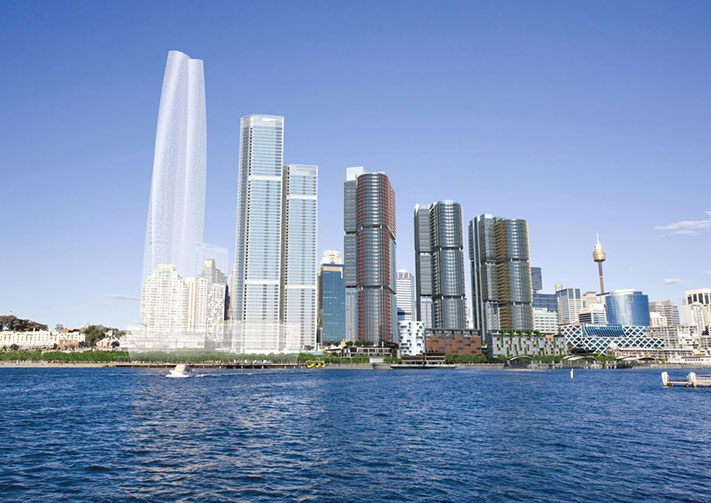
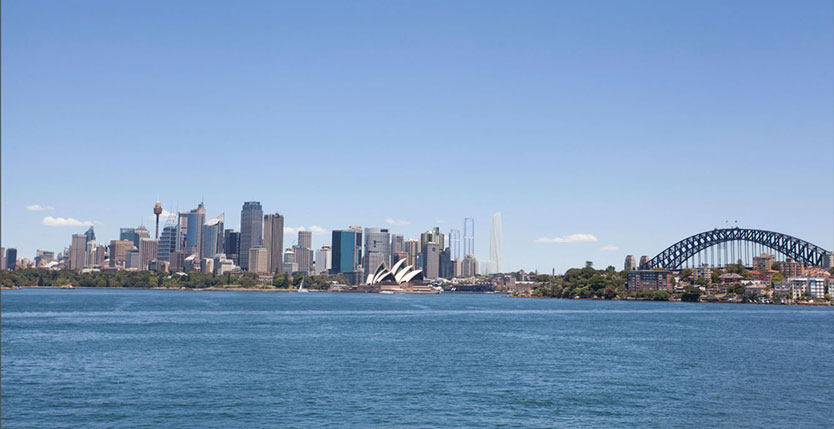
Precise Quantum Cloning: Possible Pathway To Secure Communication
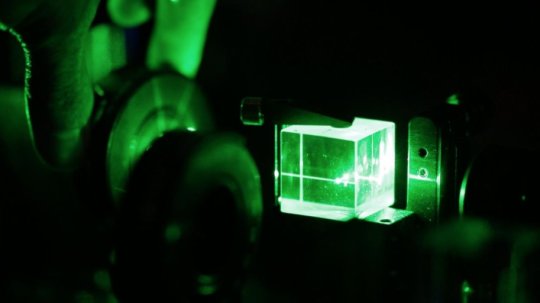
UNSW Tops The State In Latest Nature Index
Youth Jobs Path – Helping Young People Prepare For A Job
- Trial - voluntary internships of four to 12 weeks to give young job seekers a chance to demonstrate their skills in the workplace, and
- Hire - a new Youth Bonus wage subsidy of up to $10,000.
Bring On The Backpacker Boom
- offering working holiday makers the highest post-tax income among comparable countries with a tax rate of 19 per cent;
- allowing more tourists to become working holiday makers, with the age limit increasing from 30 to 35 years old;
- reducing visa application charges for working holiday makers by $50 to $390;
- allowing working holiday makers to work for the same employer for 12 months, provided the second six months is in a different region.
Disclaimer: These articles are not intended to provide medical advice, diagnosis or treatment. Views expressed here do not necessarily reflect those of Pittwater Online News or its staff.
Over 55? Hit The Gym To Improve Your Muscle And Brain Strength
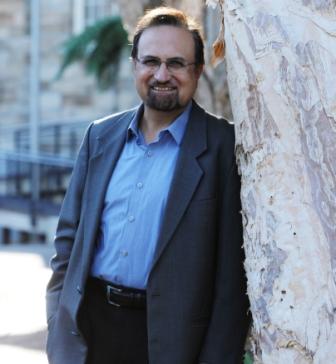
- Resistance exercise and computerised cognitive training;
- Resistance exercise and a placebo computerised training (watching nature videos);
- Brain training and a placebo exercise program (seated stretching/calisthenics); or
- Placebo physical exercise and placebo cognitive training.
Government Invests A Further $190 Million In Health And Medical Research
- improving outcomes of Hepatitis B infection
- improving diet quality and food supply in Aboriginal and Torres Strait Islander communities
- implementing interventions to improve health and justice outcomes for Indigenous offenders
- addressing the high rates of depression amongst Aboriginal and Torres Strait Islander Australians.